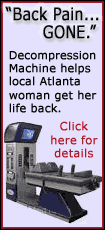|
 The Dutch study is the largest to date to show that suctioning out the clot before implanting a stent has big benefits, and could lead to wider use in heart attack treatment. Previous smaller studies of various devices had mixed results. The Dutch study is the largest to date to show that suctioning out the clot before implanting a stent has big benefits, and could lead to wider use in heart attack treatment. Previous smaller studies of various devices had mixed results.
"This study suggests that it is worth doing," said Dr. George Vetrovec, a heart disease expert at Virginia Commonwealth University in Richmond.
Most heart attacks occur when a buildup of plaque in a coronary artery ruptures, and a blood clot forms, blocking the flow of oxygen-rich blood to the heart. The preferred treatment is an angioplasty to quickly reopen the artery.
Doctors snake a tube through a blood vessel to the blocked artery and use a small balloon to compress the blockage and restore blood flow. A tiny metal-mesh stent is put in place to keep the artery open.

But sometimes the procedure causes bits of the clot or plaque to break off and plug the tinier vessels, restricting blood flow to the heart, said Dr. Felix Zijlstra, who led the study at University Medical Center Groningen in the Netherlands.
The artery is open "but still the blood doesn't go where you want it to go," he said.
They tried a different approach, suctioning the clot out before inserting the stent, and found that reduced debris and improved blood flow. The results are published in Thursday's New England Journal of Medicine.
For the study, doctors enrolled 1,071 patients who came to the hospital in 2005 or 2006 with a major heart attack and needed emergency angioplasty. Half received the conventional procedure; the other half had the blood clot suctioned out. Doctors threaded a small tube to the blockage and sucked out the clot with a syringe before putting in a stent.
"In daily practice, we say that we use the vacuum cleaner," said Zijlstra.
The heart attack was stopped in its tracks in 57 percent of the vacuum group and 44 percent of those getting regular care.
[to top of second column]
 |

Using a dye, the researchers measured how much blood from the opened artery was saturating the heart tissue. In the conventional group, 26 percent of the patients had little or no blood reaching the heart tissue, compared to 17 percent of the patients who had the blockage removed.
Over the next 30 days, those with the poorest blood flow had higher death rates
-- 5 percent compared to 1 percent for the best flow group -- and more serious complications.
Zijlstra said they are continuing to follow those patients, and the technique has been adopted at his hospital.
"I think there will be definitely others who will follow us very quickly. It's not very difficult to apply," he said.
The study was paid for by the Dutch medical center and Medtronic Inc., which makes the device used in the study. Other similar devices are available around the world.
Vetrovec, who wrote an accompanying editorial in the journal, said that the clot-removing technique is not routinely used in the U.S. It can take a bit longer to clear out the clot, he said, and guidelines recommend fast action on blocked arteries.

He said the study has "the potential to change practice," but noted that the heart attack death rate is already so low that this technique isn't likely to substantially change outcomes.
"We're sort of inching forward in terms of improvement," he said.
___
On the Net:
New England Journal: http://www.nejm.org/
[Associated
Press; By STEPHANIE NANO]
Copyright 2007 The Associated
Press. All rights reserved. This material may not be published,
broadcast, rewritten or redistributed. |